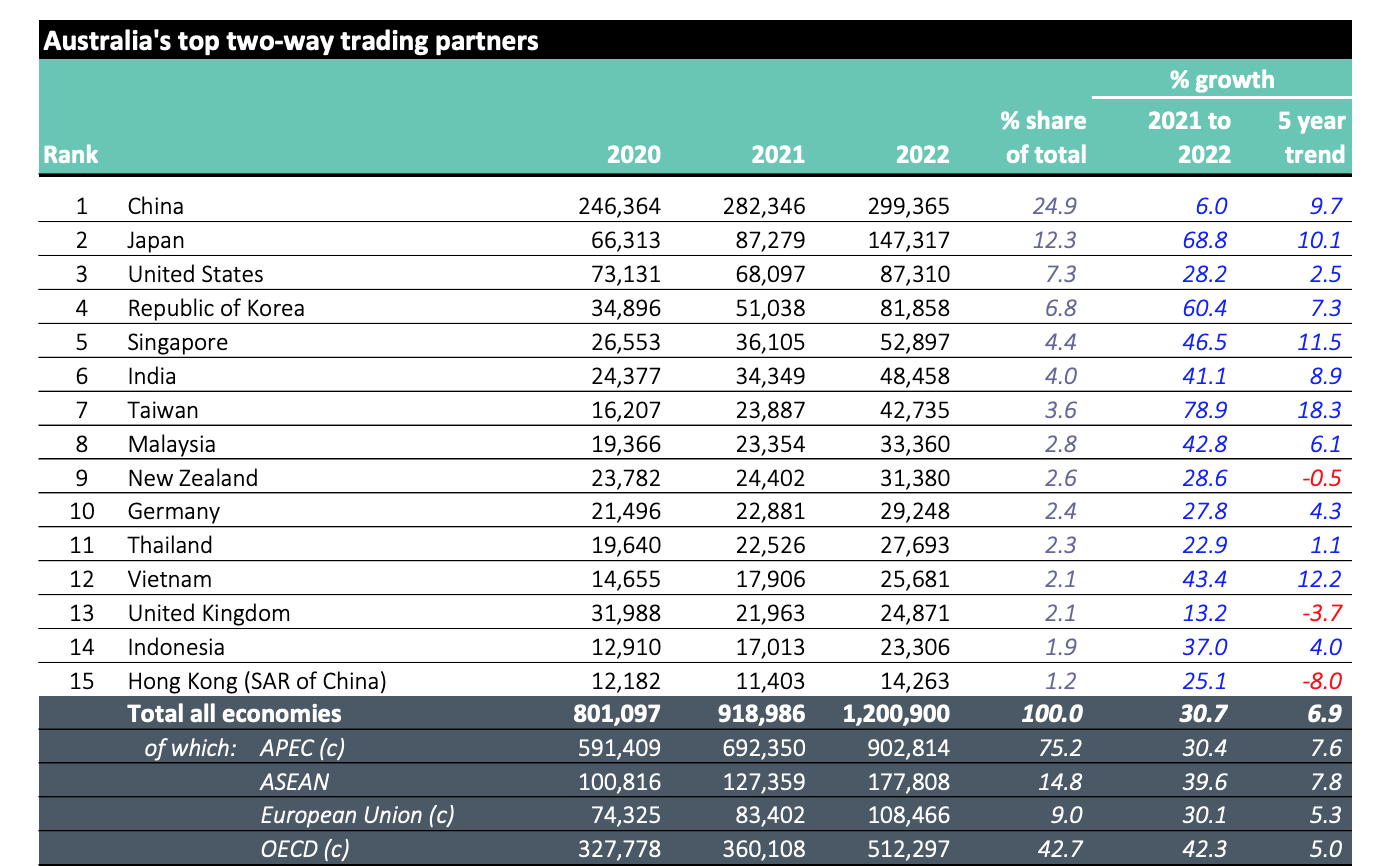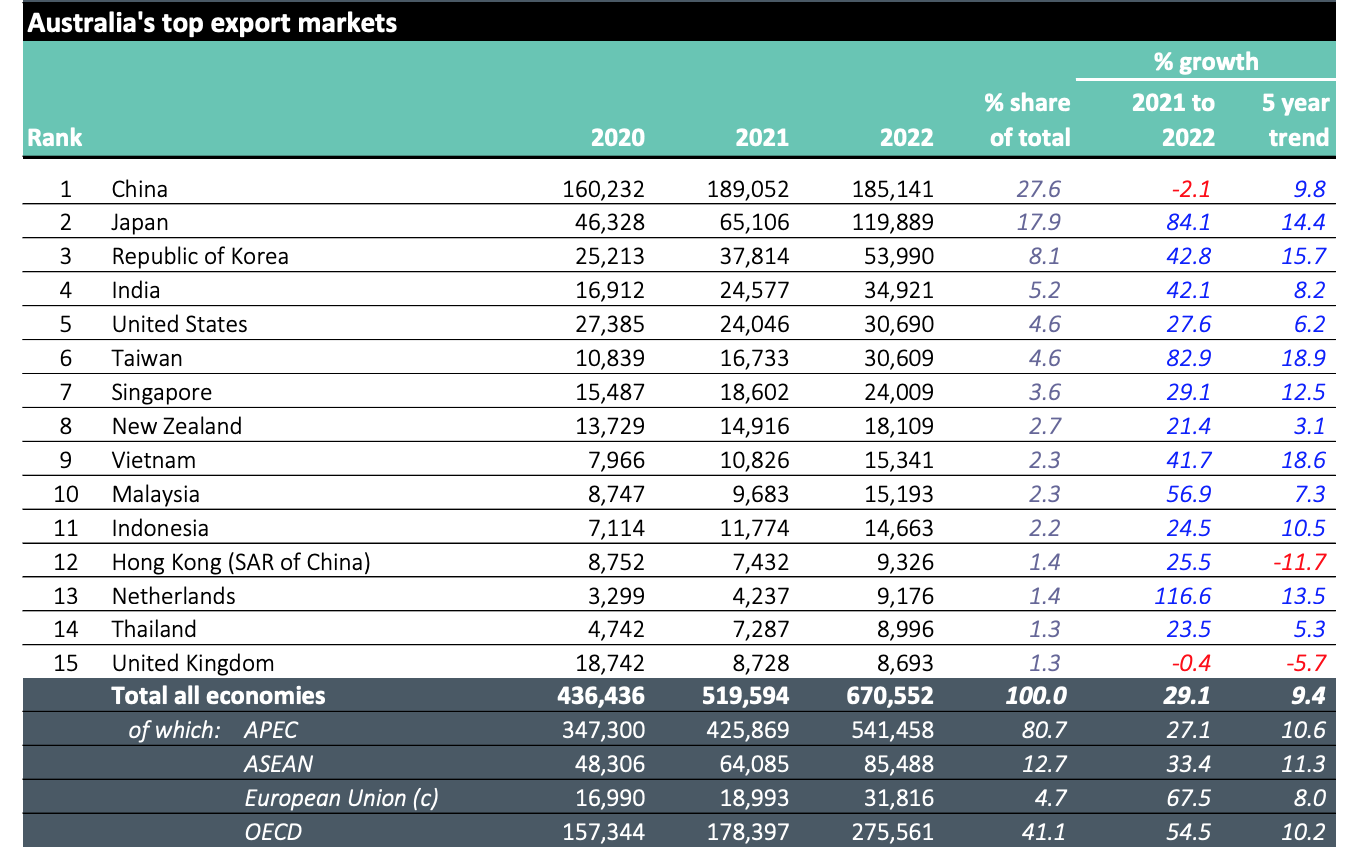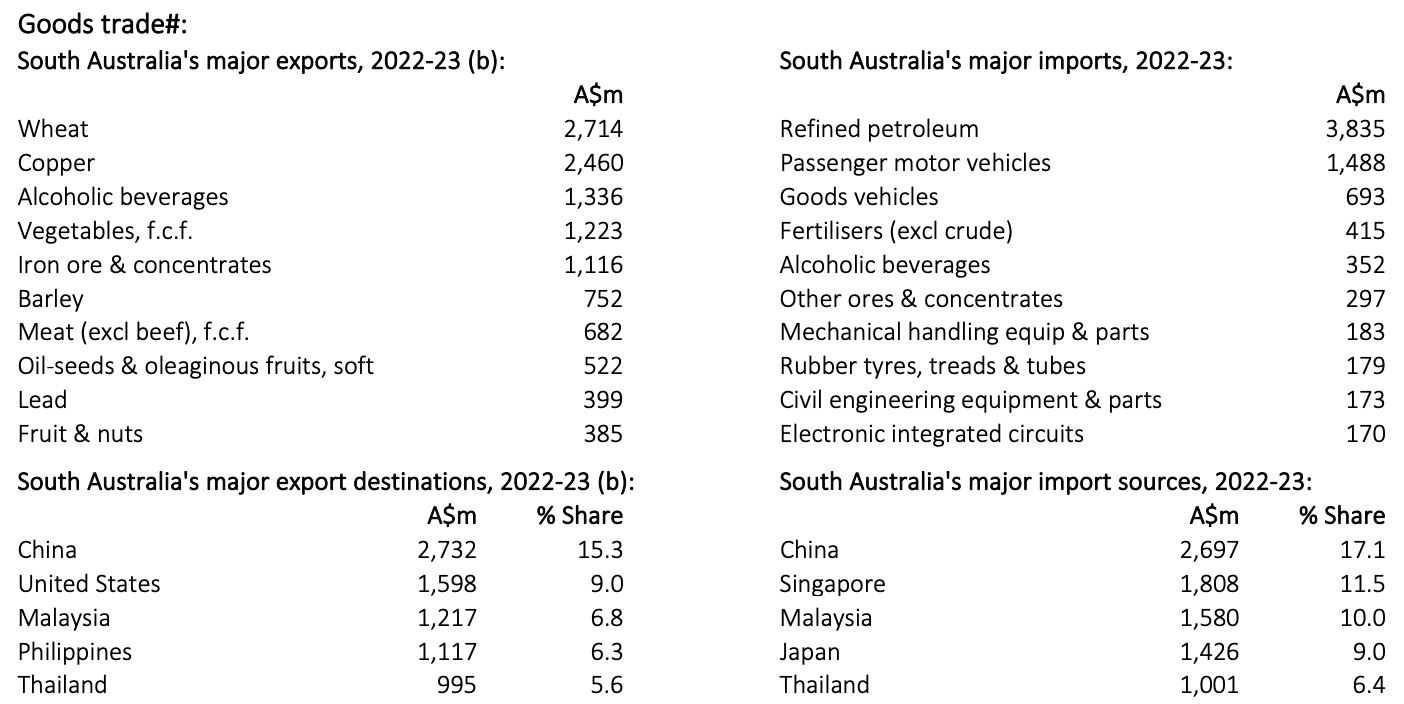Moving into new markets with market research
In 2022 The Department of Foreign Affairs and Trade released a document that proudly labelled Australia as a Top 20 Country.
As we have explored the last few weeks, Australia (and Adelaide) consistently ranks highly in global indexes as a desirable country to live, work, do business, study and invest.
In the Top 20 document Australia’s global rankings across the economy; international trade and investment; science, innovation and technology; doing business; education; health and lifestyle; democracy, diversity and global citizenship; clean energy and environment are explored.
Some key insights drawn from the report include:
- Australia has the 12th largest economy in the world
- 9th highest GDP per capita in the world and 3rd highest among the worlds largest 20 economies
- 2nd top economy for seizing opportunity from disruptive forces and 5th for traditional drivers of development (labour, investment and productivity).
In terms of our international trade and investment Australia is the:
- Largest producer of lithium, zircon and titanium mineral sands and the largest global exporter of liquefied natural gas (LNG) by quantity
- Largest producer of bauxite, iron ore, and rutile and one of the top 5 global producers of gold, uranium and zinc
- 14th largest destination for global direct investment
Our main two way trading partners are China (24.9%), Japan (12.3%) and the United States (7.3%).

Our top export partners are China (27.5%), Japan (17.9%) and the Republic of Korea (8.1%).

South Australia’s share of the our national exports trade is 3.1%, and our major exports are wheat, copper and alcohol.


Venturing into new international markets as a business offers promising avenues for growth. However moving into unfamiliar territories requires a comprehensive grasp of local dynamics, cultural nuances, regulatory frameworks, and economic landscapes.
Market research is a critical component of any business strategy, particularly when entering new markets. Here are some steps and considerations for conducting market research and exploring new markets:
- Define Your Objectives: Determine why you’re considering entering a new market. Is it to expand your customer base, increase revenue, diversify products, or tap into emerging trends?
- Identify Target Market: Research potential markets to identify segments that align with your product or service offering. Consider demographics, psychographics, behaviour patterns, and purchasing power of the target audience.
- Assess Market Size and Growth Potential: Determine the size of the market and its growth trajectory. Evaluate factors such as population trends, economic indicators, and industry forecasts to gauge the market’s potential.
- Analyse Competition: Understand the competitive landscape in the new market. Identify key competitors, their market share, strengths, weaknesses, and strategies. Assess how you can differentiate your offering to gain a competitive edge.
- Evaluate Regulatory Environment: Research regulatory requirements, industry standards, and compliance issues specific to the new market. Ensure that you understand any legal or regulatory barriers that may impact your entry strategy.
- Conduct Customer Surveys and Interviews: Gather insights directly from potential customers through surveys, interviews, focus groups, or online forums. Understand their needs, preferences, pain points, and willingness to pay for your product or service.
- Assess Cultural and Societal Factors: Consider cultural nuances, values, beliefs, and societal trends that may influence consumer behaviour in the new market. Adapt your marketing messages, branding, and product features accordingly.
- Evaluate Distribution Channels: Identify the most effective distribution channels to reach your target market. Determine whether you’ll sell directly to consumers, through retailers, distributors, or online platforms.
- Perform Financial Analysis: Estimate the costs associated with entering the new market, including market research expenses, regulatory compliance, distribution, marketing, and operational costs. Evaluate potential revenue streams and profitability.
- Develop Market Entry Strategy: Based on your research findings, develop a market entry strategy that outlines your approach, timeline, resources required, and risk mitigation measures. Consider whether to enter the market gradually or pursue a more aggressive expansion strategy.
- Monitor and Adapt: Continuously monitor market dynamics, consumer preferences, competitive actions, and regulatory changes in the new market. Be prepared to adapt your strategies and tactics accordingly to maximise opportunities and mitigate risks.
Entering new markets can be complex and challenging, but thorough market research and strategic planning can increase your chances of success and help you capitalise on growth opportunities.
Want to know more about how Square Holes can help your business expand into new territories? Head here.




